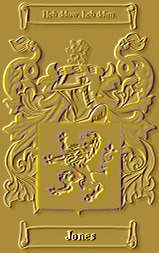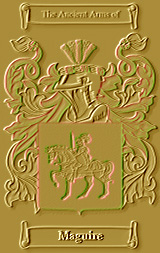
The wedding cake has been part of the marriage ceremony ever since medieval
times. Originally they were made of wheat which was a symbol of fertility
and prosperity. As a relic of once performed fertility rites, this 'wedding
cake' would have been thrown at the bride.
Around 1900 years ago the Romans began
baking wheat and salt into a small cake to be eaten. During the ceremony
the groom would eat part of a loaf of this barley bread and then he
would break the rest over his bride's head. This was taken as a sign
of good fortune and a blessing for long life and many children. The
guests would try and obtain a crumb for themselves as they too believed
they would then share in the good fortune and future prosperity of the
couple. It was only the children born to the couple whose marriage had
been celebrated this way, that could qualify for high office in Roman
culture. Not only did the cake give good fortune to the couple, it insured
a bright future for their as yet unborn children. History also tells
us that breaking the bread symbolized the breaking of the bride's virginal
state and the dominance of the groom over her.
As the wedding cake evolved into the
larger, modern version, it became physically impractical to properly
break the cake over the bride's head. The tradition disappeared fairly
quickly, though there were still reports in Scotland, as late as the
19th century, of breaking an oatcake over the bride's head. It was also
reported that in Northern Scotland, friends of the bride would put a
napkin over her head and then proceed to pour a basket of bread over
her!

In Medieval England, the wedding cake
was described as a bread which was a flour-based food without sweetening.
The breads were included in many celebratory feasts of the day, not
just at weddings. No accounts tell of a special type of wedding cake
appearing at wedding ceremonies. There are, however, stories of a custom
involving stacking small buns in a large pile in front of the newlyweds.
Stacked as high as possible the idea was to to make it difficult for
the newlyweds to kiss one another over the top. If the bride and groom
were able to kiss over the tall stack, it was thought to symbolize a
lifetime of prosperity. Eventually, the idea of stacking them neatly
and frosting them together was adopted as a more convenient option.
It is told that later in the 1660's
during the reign of King Charles II, a French chef (whose name is now
lost) visited London and was appalled at the cake-piling ritual. The
chef, who was traveling through England at the time noticed the inconvenience
of piling smaller cakes into a mound and conceived the idea of constructing
them into a solid stacked system. This earliest tiered wedding cake
utilized short-cut broom sticks to separate it's layers. Since such
an elaborate wedding cake needed to be prepared days in advance and
because of the lack of modern refrigeration or plastic wraps, the wedding
cake was frosted in lard to keep it from drying out. The lard was scraped
off just before serving. In later years, sugar was added to improve
the taste of the lard and allowed the lard to be left on the wedding
cake as a decorative icing.
The wedding cake took yet another
course correction when in the 17th Century a popular dish for weddings
became the Bride's Pie. The pie was filled with sweet breads, a mince
pie, or may have been merely a simple mutton pie. A main 'ingredient'
was a glass ring. An old adage claimed that the lady who found the ring
would be the next to be married. Bride's pies were by no means universally
found at weddings, but there are accounts of these pies being made into
the main centerpiece at less affluent ceremonies. The name Bride cakes
emphasized that the bride was the focal point of the wedding. Many other
objects also were given the prefix of bride, such as the bride bed,
bridegroom and bridesmaid. By the late 19th century, the wedding cake
became really popular, and the use of the bride pie disappeared.

Traditional Plum Wedding Cake
Early cakes were simple single-tiered plum cakes, with some variations.
There was also an unusual notion of sleeping with a piece of wedding
cake underneath one's pillow which dates back as far as the 17th century
and quite probably forms the basis for the tradition of giving cake
as a gift. Legend has it that sleepers will dream of their future spouses
if a piece of wedding cake is under their pillow. In the late 18th century
this notion led to the curious tradition in which brides would pass
tiny crumbs of wedding cake through their rings and then distribute
them to guests who could, in turn, place them under the ir pillows.
The custom was curtailed when brides began to get superstitious about
taking their rings off after the ceremony.

White wedding cake...
In the minds of most people, the wedding cake should be white. The symbolism
attached to the color white, makes explaining this tradition rather
simple. White has always denoted purity, and it relates to the white
wedding cake icing that first appeared in Victorian times. Another way
in which a white wedding cake relates to the symbol of purity, has its
basis in the fact that the wedding cake was originally referred to as
the bride's cake. This not only highlighted the bride as the central
figure of the wedding, but also created a visual link between the bride
and the cake. Today, that link is being further strengthened as more
brides have a contemporary wedding cake coordinated with their wedding
gown color, even if it's not white!. Previous to Victorian times, the
wedding cake was also white, but not because of the symbolism. Ingredients
were very difficult to come by, especially those required for icing.
White icing required the use of only the finest refined sugar, so the
whiter the cake, the more affluent the families appeared. A white wedding
cake became an outward symbol of affluence.

Cutting the wedding cake...
The wedding cake takes center stage in the traditional cake cutting
ceremony, symbolically the first task that bride and groom perform jointly
as husband and wife. This is one tradition that most of us have witnessed
many times. The first piece of wedding cake is cut by the bride with
the "help" of the groom. This task originally was delegated
exclusively to the bride. It was she who cut the wedding cake for sharing
with her guests. Distributing pieces of wedding cake to one's guests
is a part of that tradition from the Roman Empire when guests clamored
for the crumbs. But, as numbers of wedding party guests grew, so did
the size of the wedding cake, making the distribution process impossible
for the bride to undertake on her own. Wedding cake cutting became more
difficult with early multi-tiered cakes, because the icing had to be
hard enough to support the wedding cake's own weight. This made cutting
the wedding cake a joint project. After the cake cutting ceremony, the
couple proceed to feed one other from first slice. This provides another
lovely piece of symbolism, the mutual commitment of bride and groom
to provide for one another.

The multi tiered wedding cake...
The once simple wedding cake has evolved into what today is a multi-tiered
extravaganza. The multi-tiered wedding cake was originally reserved
for English royalty. Even for the nobility, the first multi-tiered wedding
cake was real in appearance only. Their upper layers were mockups made
of spun sugar. Once the problem of preventing the upper layers from
collapsing into the lower layers was solved, a real multi-tiered wedding
cake could be created. Pillars as decoration existed long before the
multi-tiered wedding cake appeared, so it was a natural progression
for cake bakers to try using pillars as a way to support the upper tiers.
To prevent the pillars from sinking into the bottom tier, icing was
hardened to provided the necessary support. There are some brides today
who can't resist saving the top layer of her multi-tiered cake. Couples
freeze the wedding cake with the intention of sharing it on their first
wedding anniversary. The tradition has its roots in the late 19th century
when a grand cake was baked for christenings. It was assumed that the
christening would occur soon after the wedding ceremony, so the two
ceremonies were often linked, as were the cakes. With the modern wedding
cake becoming more and more fancy and elaborate, the christening cake
quickly took a back seat to the wedding cake. When three-tiered cakes
became popular, the top tier was often left over. A subsequent christening
provided a perfect opportunity to finish the wedding cake. Couples could
then logically rationalize the need for three tiers --- the bottom tier
for the reception, the middle tier for distributing and the top for
the christening. As the time between the weddings and the christenings
widened, the two events became disassociated, and the reason for saving
the top tier of the wedding cake changed. Regardless of the underlying
reason, when the couple finally does eat the top tier, it serves as
a very pleasant reminder of their very special day.


